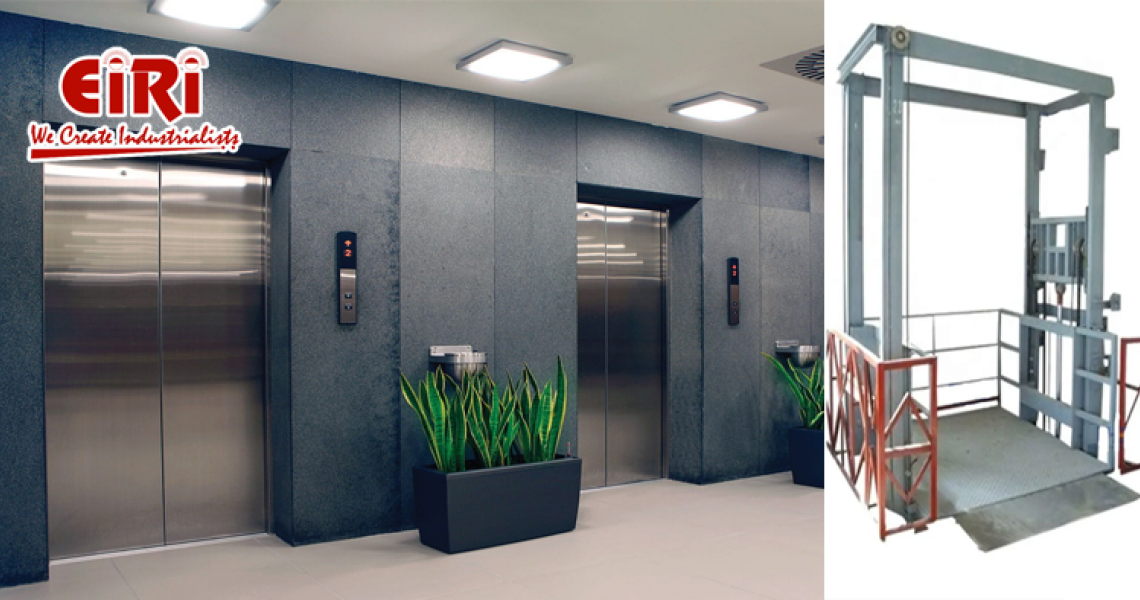Elevators Manufacturing: Navigating Growth and Technological Horizons

An elevator is an electric lift designed for vertical transportation of both people and goods within buildings. Typically, these devices are powered by electric motors, which also control counterweight system cables to facilitate smooth lifting of loads and passengers. Elevators come in various types, including:
- Geared and Gearless Traction Elevator
- Hydraulic Elevator
- Machine-Room-Less (MRL) Elevator
- Vacuum (Air Driven) Home Elevator
The market offers several other types, each tailored to specific applications. Elevators play a vital role in diverse sectors, including industrial, commercial, and residential domains.
The global elevators market, valued at $83.54 billion in 2022, is poised for a substantial leap, projected to reach $141.52 billion by 2031 with a robust CAGR of 6.23% during the forecast period from 2023 to 2031
The global elevators market, valued at $83.54 billion in 2022, is poised for a substantial leap, projected to reach $141.52 billion by 2031 with a robust CAGR of 6.23% during the forecast period from 2023 to 2031. Elevators, essential for vertical transportation within buildings, are witnessing heightened demand, particularly in nations experiencing rapid urbanization. As infrastructural landscapes evolve, escalators and elevators become indispensable in public structures, adding momentum to the market's trajectory.
The driving forces behind the elevators and escalators industry include escalating urbanization, a surge in energy-efficient investments, and a substantial increase in the aging population. As cities expand and demographics change, safety concerns and evolving lifestyles contribute to the industry's growth. Notably, the construction sector's upward trajectory presents opportunities for the market. Additionally, a surge in urbanization is generating demand for modern retail establishments and metro train stations, fostering the need for elevators and escalators.
Market Trends:
1. Infrastructure Investment:
- Increasing infrastructure spending in developing economies is a pivotal driver.
- Government initiatives in emerging nations, focusing on economic development, result in significant infrastructure projects like bridges, dams, and urban infrastructure growth.
2. Energy Efficiency:
- Elevators, accounting for 2% to 7% of total energy usage in structures, are undergoing a shift toward energy efficiency.
- Manufacturers are investing in creating energy-efficient lifts with compact designs and improved hardware controls.
- Government efforts to conserve energy are expected to boost the sales of energy-efficient elevators.
3. Diverse Applications:
- Modern lifts find applications in various settings, from ships and dams to specialized buildings like rocket launchers.
- Collective operation, enabling enhanced automatic operation, gains popularity in residential complexes and hospitals, impacting demand positively.
4. Technological Advancements:
- Touchless operation and the integration of IoT and AI enhance elevator efficiency and user experience.
- Companies like Toshiba Johnson Elevators India (TJEI) introduce advanced products, such as the ELBRIGHT series, contributing to market growth.
India Elevator Market Overview:
In recent times, the demand for elevators in India has witnessed remarkable growth, playing a pivotal role in the country's infrastructure development. Elevator manufacturers are continuously innovating and incorporating advanced technologies to enhance production and meet the rising demand. Technological advancements stand out as a significant driver propelling market growth, with a surge in urbanization, commercial construction projects, and the modernization of industrial and residential spaces further contributing to this upward trajectory.
Market Drivers:
Increased Usage of Energy-efficient Elevators:
Elevators in India are embracing energy-efficient solutions, including solar-powered operations. This innovation promises up to 50% energy savings annually compared to conventional models. The incorporation of solar panels on building rooftops allows elevators to run solely on solar power, offering a unique advantage during power outages. The captured solar energy can be used immediately, stored in batteries, or even sold back to the grid.
Installation of Advanced IoT Technology-enabled Elevator:
The integration of Internet of Things (IoT) technology in elevators enhances their functionality, utilizing artificial intelligence for efficient vertical transportation. This involves upgrading critical elevator components to handle new technology, ensuring improved safety, better performance, and up-to-date maintenance. IoT-enabled elevators provide access to all types of buildings, both commercial and residential, and can effectively map and orchestrate data to implement business logic.
Market Opportunity:
Minimization of the Carbon Footprint Using Green-Building Materials:
The construction industry, including elevators, contributes to greenhouse gas generation, impacting energy consumption. Elevators alone account for up to 10% of building energy use. To address this environmental concern, the use of smart and innovative elevator systems with features like Regenerative Drive Systems, efficient in-cab sensors, and computerized control systems can significantly minimize power consumption and contribute to a greener construction sector.
Restraints/Challenges:
High Maintenance and Installation Costs:
Elevators face challenges related to high maintenance requirements, leading to frequent malfunctions and breakdowns. Issues like power failure, worn sheaves, contamination, bearing malfunctions, and misaligned motor drives contribute to elevated maintenance costs. Proactive and preventative measures, including regular inspections and routine maintenance, are essential to ensuring smooth and reliable elevator operation. These steps can significantly reduce downtime and decrease energy consumption by up to 15%.
The India Elevator Market is poised for continued growth, driven by a combination of technological innovation, urbanization trends, and a commitment to energy efficiency in the construction sector. The elevators market is poised for growth driven by urbanization, infrastructure development, and technological advancements. As urban landscapes evolve, the demand for residential lifts is expected to rise, fueled by an increasing number of low- and high-rise buildings. The adoption of touchless operation, coupled with IoT and AI integration, is anticipated to create profitable opportunities, enhancing the user experience and efficiency of elevators.
The elevators manufacturing industry is at the forefront of technological innovation, responding to the changing dynamics of urbanization and energy efficiency. With a significant surge in infrastructure spending and a growing focus on sustainable practices, the market is positioned for robust growth, promising a vertical ascent in the coming years.










